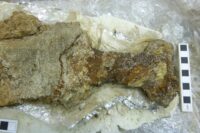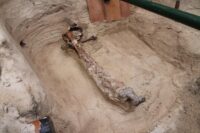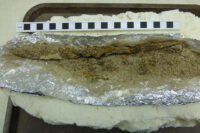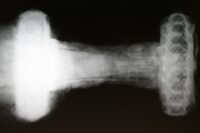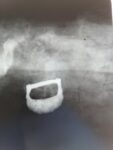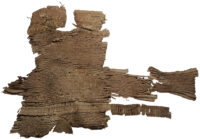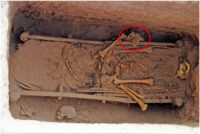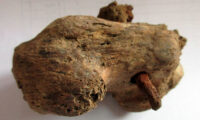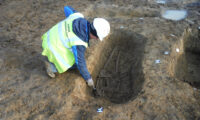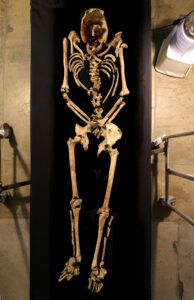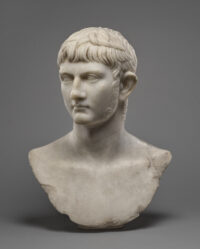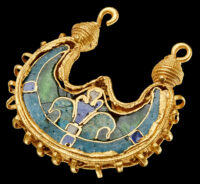 A piece of gold art jewelry found by a metal detectorist in a field near Bøvling, West Jutland, is an extremely rare 11th century cloisonné enamel earring. Only 10 or 12 examples of them are known worldwide, and this is the first one ever discovered in Scandinavia.
A piece of gold art jewelry found by a metal detectorist in a field near Bøvling, West Jutland, is an extremely rare 11th century cloisonné enamel earring. Only 10 or 12 examples of them are known worldwide, and this is the first one ever discovered in Scandinavia.
The crescent-shaped earring is backed with a crescent-shaped gold plate framed with a gold beaded edge decorated with gold loops. The piece is made of cloisonné enamel in shades of purple, green and blue is divided by gold threads to form a stylized design of two birds on either side of a tree. This symbolizes the tree of life motif. This type of earring design has been found in Egypt, Syria, Byzantium and Russia. This example is likely of Egyptian origin.
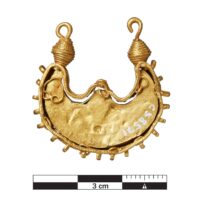 The only other gold and cloisonné enamel object from the 11th or 12th century Denmark that can compare with this piece in craftsmanship is the exceptional Dagmar Cross which was found in a royal tomb under St. Bendt’s Church in Ringsted. The Dagmar Cross is much more elaborate, a reliquary of Byzantine origin, but like the earring, it would have been inaccessible to anybody in Viking Denmark as a trade good, even if they had been able to afford the astronomical expense. These had to have been gifts from extremely wealthy foreign dignitaries, perhaps even the Byzantine emperor.
The only other gold and cloisonné enamel object from the 11th or 12th century Denmark that can compare with this piece in craftsmanship is the exceptional Dagmar Cross which was found in a royal tomb under St. Bendt’s Church in Ringsted. The Dagmar Cross is much more elaborate, a reliquary of Byzantine origin, but like the earring, it would have been inaccessible to anybody in Viking Denmark as a trade good, even if they had been able to afford the astronomical expense. These had to have been gifts from extremely wealthy foreign dignitaries, perhaps even the Byzantine emperor.
That makes the earring’s presence in a Bøvling field even more mysterious. It was not found in a royal tomb. There aren’t even any known Viking settlements anywhere around Bøvling, let alone royal graves.
An entertaining speculative romp on the topic from National Museum of Denmark curator Peter Pentz:
“One explanation may be that many Vikings went into war service for the Byzantine emperor, who had a bodyguard consisting of warriors from Scandinavia. We know from the Icelandic sagas that the mercenaries came home from the East with silk and weapons, and it is also said that the emperor occasionally donated fine gifts to his bodyguard. So it is conceivable that the earring was given personally by the emperor to a trusted Viking in the bodyguard. And then it must have been lost under unknown circumstances in Denmark,” says Peter Pentz.
One possibility is also that a pilgrim has brought home the jewelry. It could, for example, be King Erik Ejegod, who traveled to Jerusalem with his wife Bodil. The king himself died on the journey.
The earring went on display Monday at the National Museum’s The Raid exhibition which combines precious objects from the Viking Age with a cinematic recreation of the raids that secured so much of that treasure.
